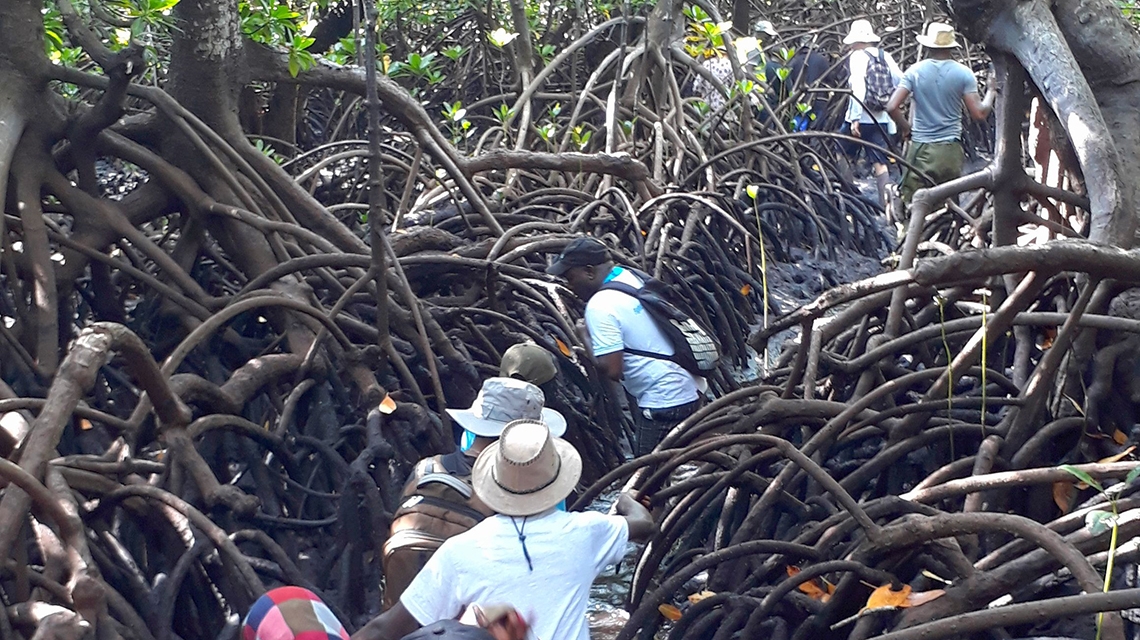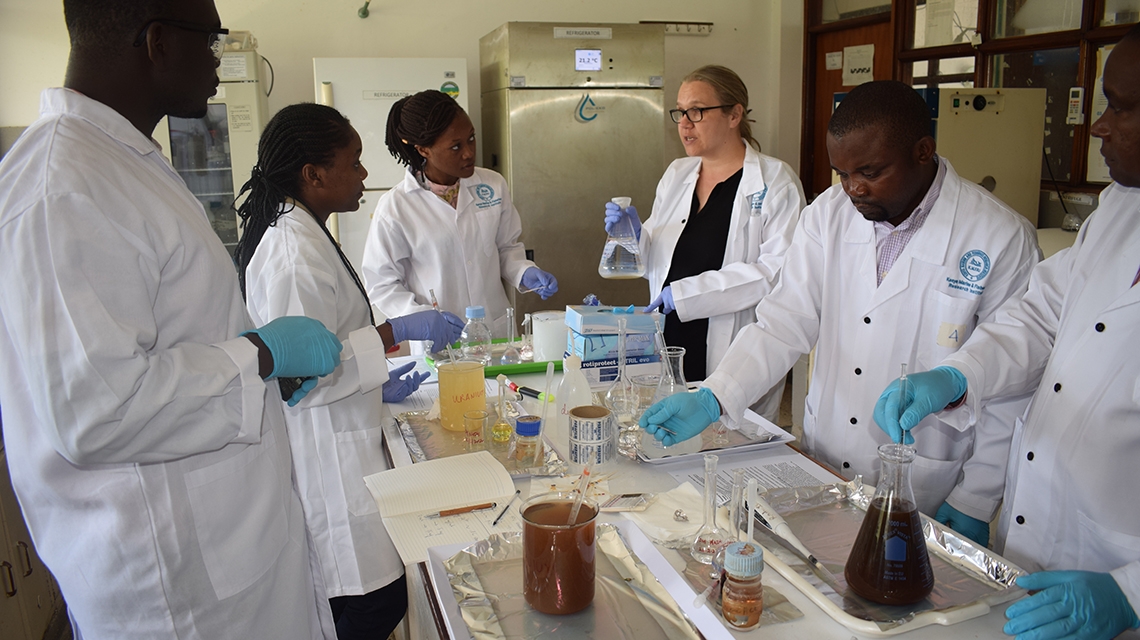Both the marine and terrestrial environments in many African countries have been impacted by contamination from diverse anthropogenic activities such as mining, industrialization, shipping, and offshore oil and gas exploration. All these activities can potentially introduce radionuclides into the environment. By establishing appropriate environmental radioactivity monitoring programmes, these countries can begin to reliably monitor the pollution that can arise from these activities.
To help address this challenge, the IAEA supported a regional 10-day training course in late February 2020 on the Marine and Terrestrial Sampling and Pre-treatment of Samples for Radioactivity Measurements held in Kenya at three coastal locations: Mombasa, Ukunda and Malindi. Through this field training, the IAEA trained scientists and technical staff from selected African countries that recently established, or are in the process of establishing, their national environmental radioactivity monitoring programs: Angola, Burkina Faso, Chad, Congo, Djibouti, Ethiopia, Ghana, Madagascar, Malawi, Mauritius, Namibia, Nigeria, Senegal, Sudan, Tanzania, Zambia and Zimbabwe.
This hands-on field and laboratory-based training equipped the participants and technical professionals with knowledge how to correctly collect and pre-treat environmental samples for measurement of radioactivity. Radioanalytical laboratories are still scarce in Africa; about one laboratory per country on average addresses environmental radioactivity concerns today. Therefore, collaboration between laboratories is crucial to improve and sustain capacity for reliable environmental radioactivity monitoring through knowledge sharing and networking.
“Zambia is a landlocked country with many freshwater rivers and lakes. However, the country’s economy relies heavily on mining and both old and new mines are a potential steady source of radioactive waste,” said Phillimon Shaba from the National Institute for Scientific and Industrial Research in Zambia. “If not managed properly, this contamination can have a drastic effect on our precious environmental resources and public health.”
Coastal environments are particularly vulnerable to radiochemical contamination. Harbors, for example, with their slow-moving waters and high rates of sedimentation, can act as sinks for radiological and toxic contamination. Contaminants can also be carried to the coastal environment by rivers, which often deposit their sediment along the coastline.
“There is limited capacity in this region to measure and monitor radionuclides in the marine, coastal and terrestrial environment. Through building the capacity in these skills, it will be possible to produce reliable quality data to help protect local populations that heavily depend on agriculture and seafood,” said Martina Rozmaric, Research Scientist and Quality Manager at IAEA Radiometrics Laboratory in Monaco.
To adequately conduct marine pollution studies using nuclear techniques, local technicians must be able to perform appropriate sampling and preparation techniques for radioactivity measurements.
“Every good analytical result begins with getting the sampling process right,” said Oscar Adukpo from the Radiation Protection Institute, Ghana Atomic Energy Commission. “I firmly believe now that we can avoid petty mistakes in sampling and samples preparations that may have been made prior to the use of analytical devices for measurement, as these training hands-on exercises demonstrate.”
There is limited capacity in this region to measure and monitor radionuclides in the marine, coastal and terrestrial environment. Through building the capacity in these skills, it will be possible to produce reliable quality data to help protect local populations that heavily depend on agriculture and seafood.








